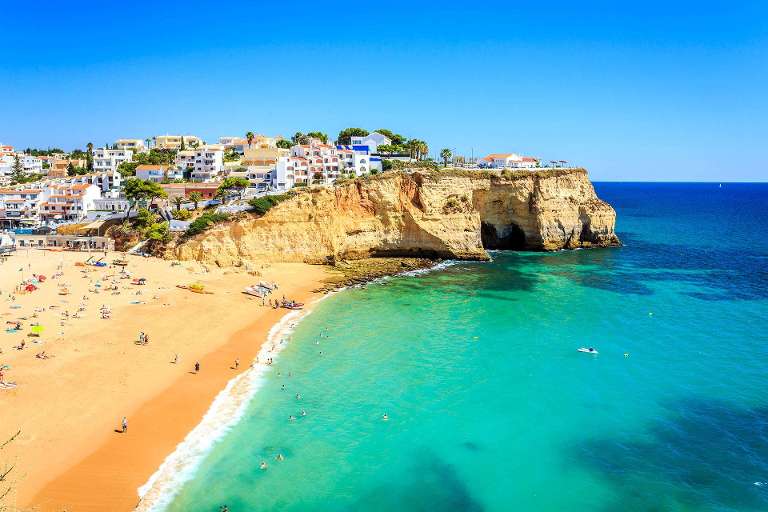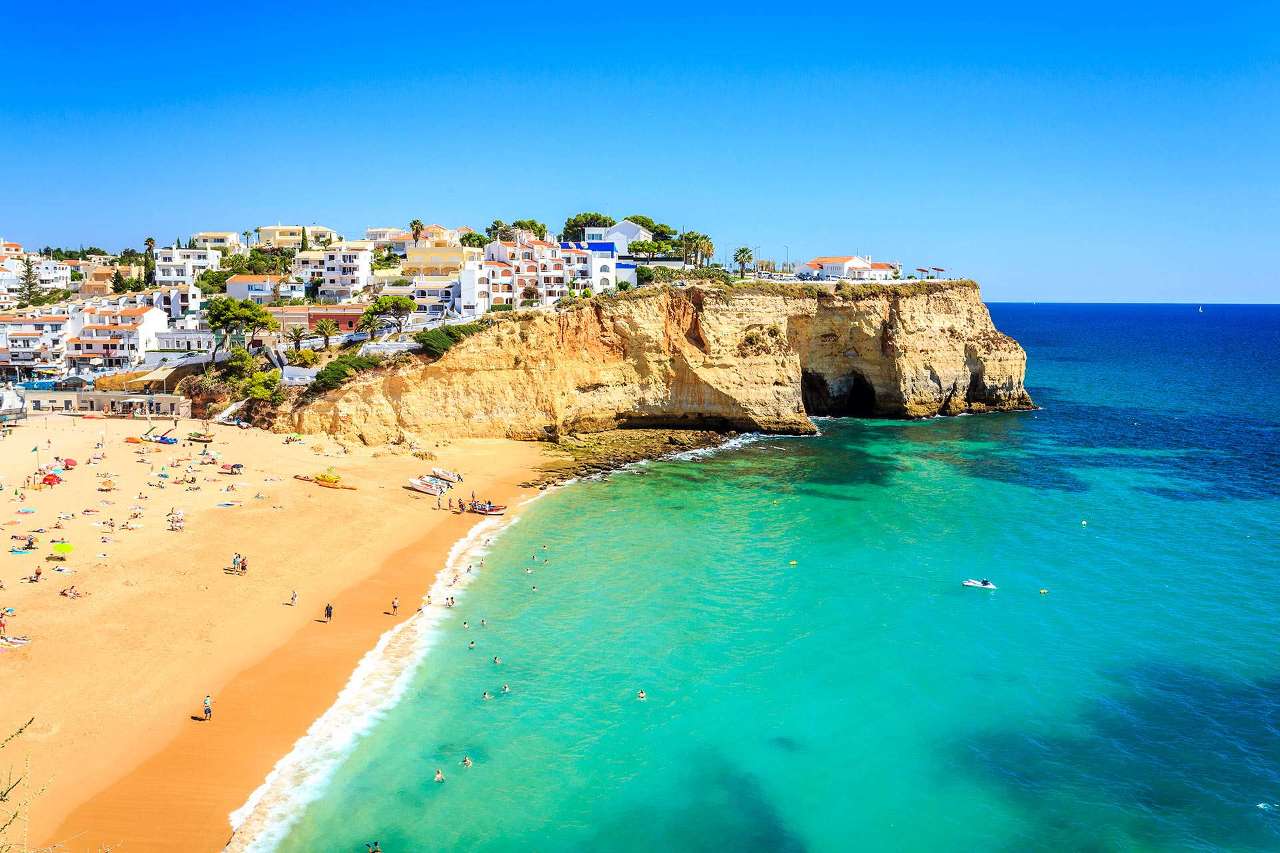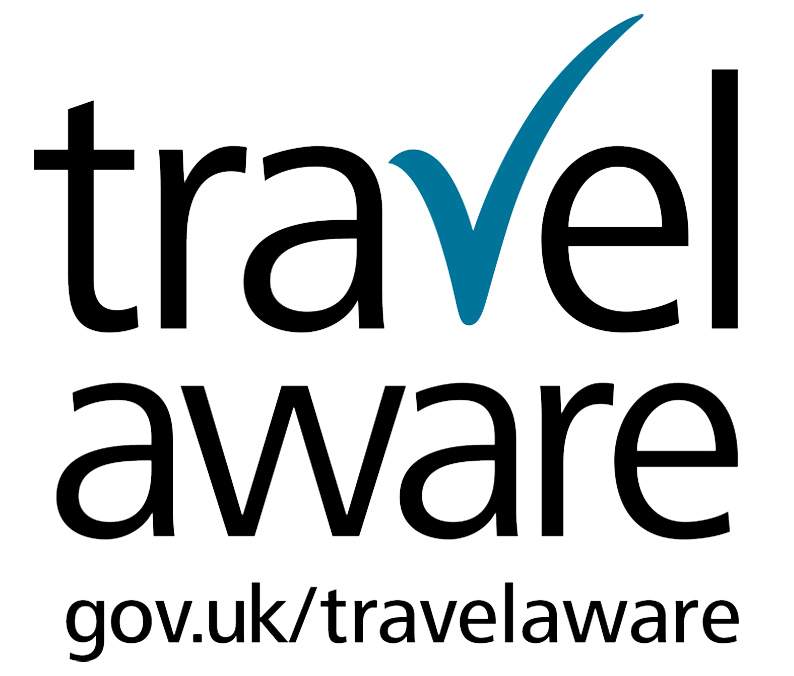Welcome to the Algarve

A delightful mix of cosmopolitan resorts, laid-back country towns and hilltop villages where traditional handicrafts still proper provides a stunning backdrop against which to enjoy many special occasions, whether relaxing by the pool, enjoying a family day out at the beach or simply wandering through the cobbled streets of the many historic towns and villages.
Visitors can escape to the most south westerly point on mainland Europe, the windswept Cape St. Vincent, which displays towering cliffs and a rich maritime history. Head to the Ria Formosa Natural Park, home to flamingos, or take a short boat journey out to the ‘Ilha Deserta’ to enjoy freshly grilled sardines while watching the sun set over the ocean.
Did you know?...
A distinctive feature of Algarvean architecture is the incredible range of chimney pots! It is fascinating to note the shapes and patterns and the intricate latticework to be seen throughout the whole of the Algarve.

Great Things to do on the Algarve
Play Golf!
The Algarve is renowned for the quality of its golf courses, offering challenges for every standard of player. There are over 30 courses along the length of the region.
Visit the most south westerly tip of Europe at the Cabo de São Vicente, which reputedly has one of the most powerful lighthouses in Europe. To watch the sun setting here is a truly memorable experience.
Wander around the delightful old town of Faro.
Faro is the regional capital and has a delightful old town, well worth visiting for an afternoon or early evening and having a wander around. Stop for a drink and watch the world go by along the Rua de Santo Antonio, which is lined with shops, bars and restaurants.
Pamper yourself in the spa town of Monchique.
This delightful town is set amidst hills of cork, eucalyptus and fruit trees. There are some lovely walks through the woods with stunning views of the mountains. Indulge in some treatments in the Spa Hotel Termal in Caldas da Monchique.
Explore the castle town of Silves.
The cathedral, built in red sandstone, and the Moorish castle both offer beautiful views over the orange and almond groves below.
Did you know?...
The exiled King of Portugal awarded Olhão town status because in 1808 a fishing boat sailed from the port to Rio de Janeiro to inform him that French troops had withdrawn from Portugal. Money was invested in the fishing industry and Olhão is still the leading fishing port on the Algarve.
Browse the market stalls at Loulé, which is famous for its lively Saturday market where it is possible to buy some great bargains in leather and textiles. The town is also well known for its crafts- watch the local artisans wood carving, making lace and painting pottery and tiles.
Try sardines along the quay at Portimão, freshly caught and simply served with salad and local wine. Explore the narrow streets of the old quarter with their fascinating shops, some specialising in leather goods.
Sample the port wine.
When in Rome… don’t forget to sample the many different types of port wine! Chilled white port makes an interesting aperitif and can be a serious rival to sherry. Accompanied by some delicious local olives, it’s a great way to preface a supper of freshly grilled sardines!
Did you know?...
The most south-westerly tip of Europe is the Cabo de São Vicente, whose lighthouse lights can be seen as far as 60km out to sea.
Explore the beaches of the Algarve
The Algarve is famous for its diverse and beautiful shoreline, which ranges from long stretches of sandy beaches in the East to tiny rocky coves and dramatic cliffs in the West. There are about 90 ‘Blue Flag’ beaches on the Algarve. Here are some beaches to choose from…
- Falésia
This golden sandy beach seems to go on for ever. It is backed by reddish cliffs, and is overlooked by some of the Algarve’s finest hotels. There are various wooden shack style beach bar/restaurants dotted along the beach. - Olhos de Agua
Olhos de Agua was originally a fishing village. It is a small sandy beach with several restaurants set in sandy coves. - Albuferia
The beach fronting Albuferia is a lovely sweep of sand backed by sandstone cliffs and rock formations. This is the sort of beach where you can hire pedaloes, go on inflatable bananas, or go water skiing. - Praia Verde
This can be found to the east of Tavira and is one of the least developed stretches of sand along this part of the coast. - Praia do Canavlal
A less developed beach which can only be accessed via footpaths which go over the top of the cliffs and down via steps carved into the cliffs. It is narrow and sheltered on either side of the cliffs, thus creating a feeling of isolation.

Explore the towns and villages of the Algarve
The Algarve coastline stretches for some 180 kilometres and offers and amazing variety of opportunities to explore.
Tavira is considered by many to be the most picturesque town on the Algarve. The river Gilão flows through it and the two sides of the town are joined by a Roman bridge. There are some delightful cobbled streets and renowned fish restaurants on the river front. One claim to fame of Tavira is that there are about 40 churches in the district.
Loulé is famous for its colourful Saturday market where people come from far and wide to buy or simply to observe. There are numerous stalls selling fruit and vegetables, fresh fish, herbs, honey, dried fruit and nuts, clothes, shoes and basketware. The town is also an important centre for local handicrafts such as copper, leather and ceramic goods.

Silves has a lovely Moorish castle to explore and the views from the fortress over the orange groves and beyond are breathtaking. The town is surrounded by orange groves and dominated by the Moorish castle itself.
Did you know?...
Lagos was the port from which ships embarked on voyages of exploration during the age of the Great Discoveries in the 15th century.
Lagos is one of the most popular towns and resorts along this coastline. The beaches here are fabulous, characteristically sandy coves with the interestingly shaped rocky outcrops framing them. The town is enclosed within 14th century walls and dotted around the cobbled streets there are plenty of bars, restaurants and shops.
Food and Wine
Breakfast
In Portugal breakfast is often taken at a café and will normally consist of a ‘meia de leite’, ‘galão’ or ‘bica’ or in other words coffee with milk, coffee with mostly milk in a glass, or an espresso. This is normally accompanied by toast, which can be soft loaf bread, or homemade type, a croissant, a sandwich or a range of cakes.
Did you know?...
The grapes of the Algarve saved the quality of northern wine in the 19th century. There had been a blight that had eradicated most of the northern varieties, and the southern grapes were blended with what remained of those in the Douro region.
Lunch
This is one of the most important meals of the day, and when the Portuguese have a sandwich at lunchtime they consider it as not having had lunch! Most families will have a three-course meal during the day. A typical menu would be soup, a main dish with either fish or meat, rice, potatoes and salad followed by dessert, such as ‘pudim’ which is rather like crème caramel. There are many places that serve the dish of the day and if you avoid the tourist areas you can have a ‘prato do dia’ at a very reasonable price.
However, for those of us who would prefer to save ourselves for dinner, sardines on the beach, or a salad in the marina usually suffice. The Portuguese usually request bread when eating sardines and the fish is placed on the bread whilst the skin and head are removed. After preparing the three or four sardines they eat the bread with its marinade.
Dinner
Another very important meal of the day, regardless of what one has eaten for lunch. This is also a three course affair similar to lunch and always accompanied by wine.















